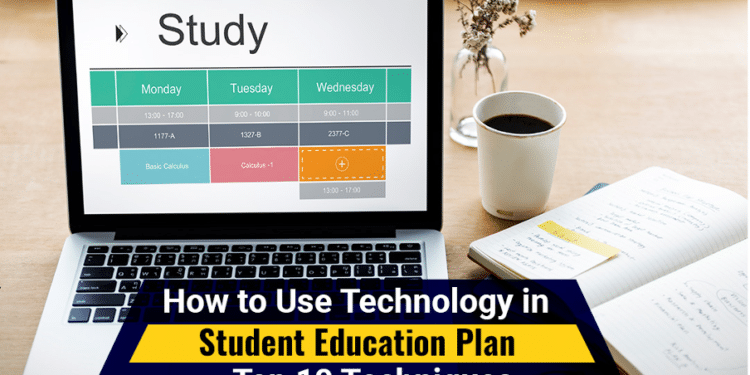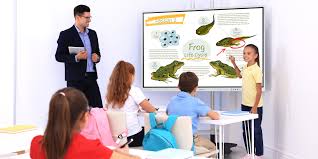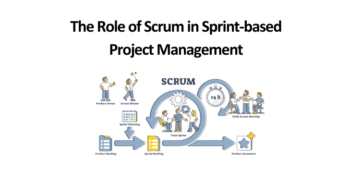Creating a SEP (Student Education Plan) for learners can be exhausting, but newer technology upgrades have made it much easier. Providing a tailored and comprehensive educational plan for students with extensive learning needs is no small feat. You have to craft it to meet the student’s unique interests and needs.
By creating smarter goals, you can set your students up for success and enable them to reach their potential. These student education lesson plans significantly impact the engagement of students with disabilities at school. This way, you can keep track of the activities and the current educational goals of your students.
Keeping their learning patterns in consideration, you can devise personalised teaching strategies with the inclusion of tech gadgets. This article explores in detail the ins and outs of a student education plan that is crucial for the smooth learning of children with certain needs.
Let’s first discuss what a SEP actually entails.
What Is a Student Educational Plan?
As per Reedley College, a Student Education Plan (SEP) refers to a document that a counsellor prepares along with a student to show different activities and courses. That document reflects different activities planned to reach your career and academic goals.
Ideally, students should develop a SEP before starting the first semester at RC and stay updated on it throughout their enrolment period. If they feel confused about managing the activities and homework listed in a SEP, they can ask for help with their assignments from experts and reduce their academic workload.
Top 10 Techniques to Use Tech in Student Education Plan
A great way to start is to take a moment and think about the basics of an individualised learning plan for the general education programs of students. Many students have invested millions of dollars into buying devices such as Chromebooks, MacBooks, and iPads. Due to the COVID lockdowns, millions of students have already shifted towards using technology in virtual schools.
In this age, technology has become an integral part of education. There are several e-learning platforms that focus on the improvement of traditional learning processes for children. Furthermore, the introduction of technology in the classroom also improves cross-cultural communication between teachers and students.
Here are the top ten techniques that you can use to introduce technology in the SEP:

1. Try a Virtual Field Trip
If the location of the educational field trip is away and you cannot reach it due to logistical issues, you can plan a virtual field trip. Not only that, you can plan as many virtual study trips as you want and add them to your student education plan. There are several apps that you can use to explore natural phenomena (for example, the Great Barrier Reef) and buildings (for example, the Empire State Building).
This can add an engaging and new element to your classroom lectures and the learning experiences of the students shall also improve. Furthermore, you can also study the areas yourself for increased comprehension of concepts.
2. Gamified Learning
In today’s world, gamified learning has earned a special spot in the educational world. Teachers often add gamified studying activities in the student education plan they craft. Not only are the games incredibly engaging, but they also build the foundational knowledge of students. Students naturally feel more interested in playing games and enjoy the process as compared to reading the textual material.
For instance, you can add Pear Practice (a digital studying experience helpful for K -12 instructors) to boost independent practices and collaboration among students. This way, students feel even more confident and creative when responding to the course activities.
3. Get Student Feedback
The true assessment of the structure of any curriculum or classroom happens when one gets to know how it can help students learn. Getting feedback from learners is crucial to know how well your student education plan is working. You may also get different recommendations from students and connect them with the classroom resources.
Furthermore, you can also use online surveys and polls to get feedback on your learning plan. If you are using integrated social media channels, you can also expand the Twitter hashtags and let the students provide their feedback.
An example is the #QNTA tag, which refers to ‘questions that need answers. This way, you will know more about the learning deficiencies of students and know how to meet them. Feedback actually assists you in improving your custom education plans.
4. Integration of Social Media
These days, young students are addicted to using social media, so you can integrate it into your classroom via technology. Social media can also be used to connect the students with the curriculum and classroom resources.
For instance, you can make a Facebook group for your individual students where you talk about different discussion topics. You can also make interactive reels for students on different social media channels so that they understand the message better.
Additionally, you can develop unique Twitter hashtags to keep the students engaged with you on social media. Your comprehensive student educational plan should have different social media strategies to keep the students connected with the learning platforms.
5. Reviewing and Criticising Web Pages
You can find as much relevant information on the internet as you want, but most of it won’t be reliable. Keep in mind that Wikipedia is not essentially considered a reliable and trustworthy source for getting citations when crafting scholarly papers.
Of course, you cannot go on telling students about each and every page on the internet about its authenticity and reliability. Instead, you should make it a priority to empower your students with digital literacy so that they can analyse and discern reliable information.
In the comprehensive student education plan you will craft; students and teachers should engage in tech-based activities. It will assist in the development of student’s comprehension regarding the identification of reliable web pages.
6. Using the Classroom Calendar
You should design a shared online calendar for the class and share it with the students through Google Calendar or any other channel that you prefer. Don’t forget to post the assignments and due dates (such as guest speakers and field trips) in the calendar dates. Also, ensure that all these dates are accessible to the students.
Furthermore, you can also choose to go a step further and send the dates to the parents of the children. This way, they will be connected with their children’s tests and exam dates. This way, they can play a crucial role in the engagement of their child’s learning process and assist them in finishing work on time.
Special students usually take more time to finish their writing projects. To meet the deadlines and all the learning objectives, they can also employ services from the best assignment writing companies in the UK. Such agencies provide individualised educational assistance to students.
7. Using Virtual Manipulatives
Do you know another effective and fun way for children to use technology? Well, you can add the virtual manipulatives to the student education plan. Such set-ups provide a 3D environment for students to interact with the lesson plans.
In addition, they can use the information to break down complex educational issues into smaller pieces. These virtual manipulatives also contain visuals, challenges and learning activities. They also stimulate the engagement and learning experiences of the students.
Through the incorporation of virtual tools, learners get over the traditional manipulatives like base ten cards. The virtual alternatives are more beneficial, and they can make the learning process of students even more effective.
8. Learning Management Systems
With tech-savvy students, it is important for instructors to use digital learning management systems to keep track of student’s performance. Not only that, you can also evaluate the progress and behaviour of the students. The apps allow students to organise and keep track of their progress and accomplishments.
Also, you can develop a reward system for the students who perform well in their quizzes and papers. For instance, you can give small treats to students who achieve certain grades or gain a certain percentage in the papers. It motivates the students to do better and also helps the instructors get desirable results from the student education plan.
9. Using Videos for Teaching
The presentations and digital media can bring boring textbook material to life in a classroom. When crafting a student education plan, you should consider incorporating visual effects methods into your normal teaching practices. For instance, you can develop digital presentations and slideshows to make the educational concepts even more engaging for students.
Apart from that, students can also be engaged in conference calls such as Skype, Google Hangouts, and Facetime. These are all the fun and engaging ways to boost the engagement of the students with the lessons. Also, they can learn about the benefits of technology and multimedia usage this way.
10. Blogging
Although many teachers try traditional journaling practices for the students, that format usually results in mundane writing. If the instructors allow students to create free and creative classroom blogs, it will make storytelling and journaling really easier for students.
Blogging usually offers students an avenue to express their thoughts and ideas to a wider audience. Also, they can get feedback from a variety of people which further assists in helping them shape their opinions.
It is an exciting way for the students to share what they learn in the premises of the classrooms. Also, the instructors can set different learning goals in the student education plan they make and assess the performance of learners.
Student Education Plan Example
Here is a sample of the student education plan that we have taken from HSLDA. It sheds light on the following important aspects of the educational needs of the students:
- General cognitive ability
- Academic achievements
- Current performance level
- Educational objectives and goals
- Accommodation and support to meet educational needs

Student Education Plan Template
Here is an individual learning plan template by Twinkl that students and teachers can use to make study plans for students. It is important that all support staff and teachers stay on the same side regarding the education of a child. This document can work as a top-class learning plan for normal students or children with special education needs.

How Do You Use Technology to Support Student Learning?
The visual learners can use tablets or other smart boards to review the visual aids, while the writing/reading students can use media to absorb the information. Auditory learners can use audiotapes or media streaming platforms.
Apart from that, the apparent modes of using technology to support SEP students are the following:
- Through PowerPoint and games
- Via Internet home working assignments
- Through online grading systems
- Via classroom tablets
These are some ways that teachers can utilise to implement technology in the living classroom. The usage of technology in the study area also leads to the increased success rate of students in their evaluation exams.
What Is the Best Technology Used for Students?
As per Nandbox, the best technology for students is smart pens. These pens have almost revolutionised the process of note-taking for students. Students can use these pens to capture everything they craft and draw. Also, the best thing about using such pens is that they can be used to sync digital devices and store different notes. The most prominent examples of such pens are the Moleskine Pen+ or the Livescribe Echo.

Conclusion
All in all, technology has really become its own form of literacy because it is often used in everyday life. Along with its numerous other benefits, it has also made the making of a SEP (Student Education Plan) easier for teachers and students. Using versatile tech gadgets, students can learn and refine the skills that prepare them for a life beyond the classroom.
A lesson plan also requires students to solve multiple academic assignments. Students often need personalised assistance with such papers, and they take more time than normal at the beginning levels to finish them. To quickly complete all papers before the deadline, students can also buy their assignments online from professional writers.
The perfect combination of technology tools and veteran writers’ experience helps students meet their educational goals. It also significantly improves their learning styles and enhances their learning experiences.












